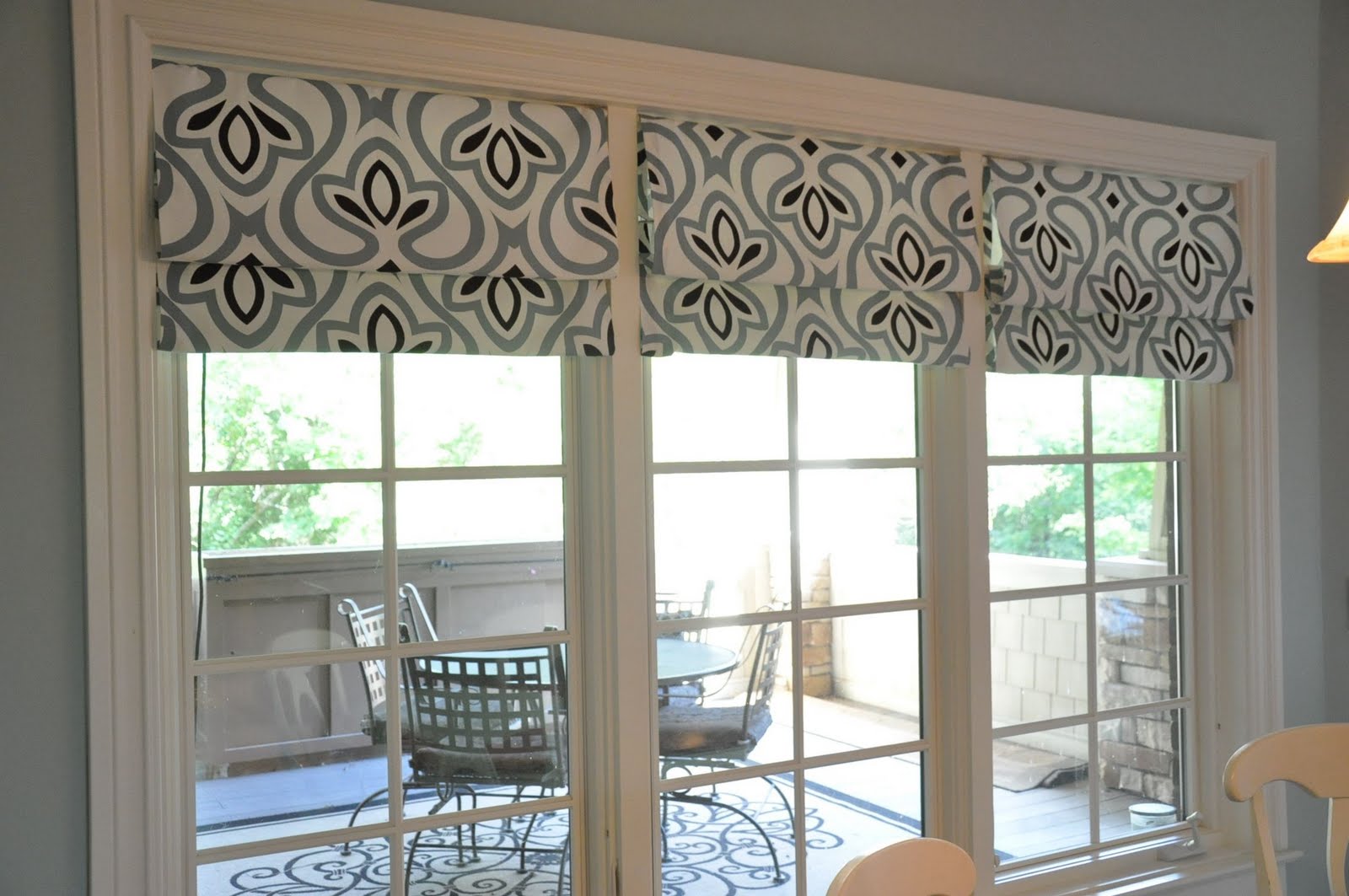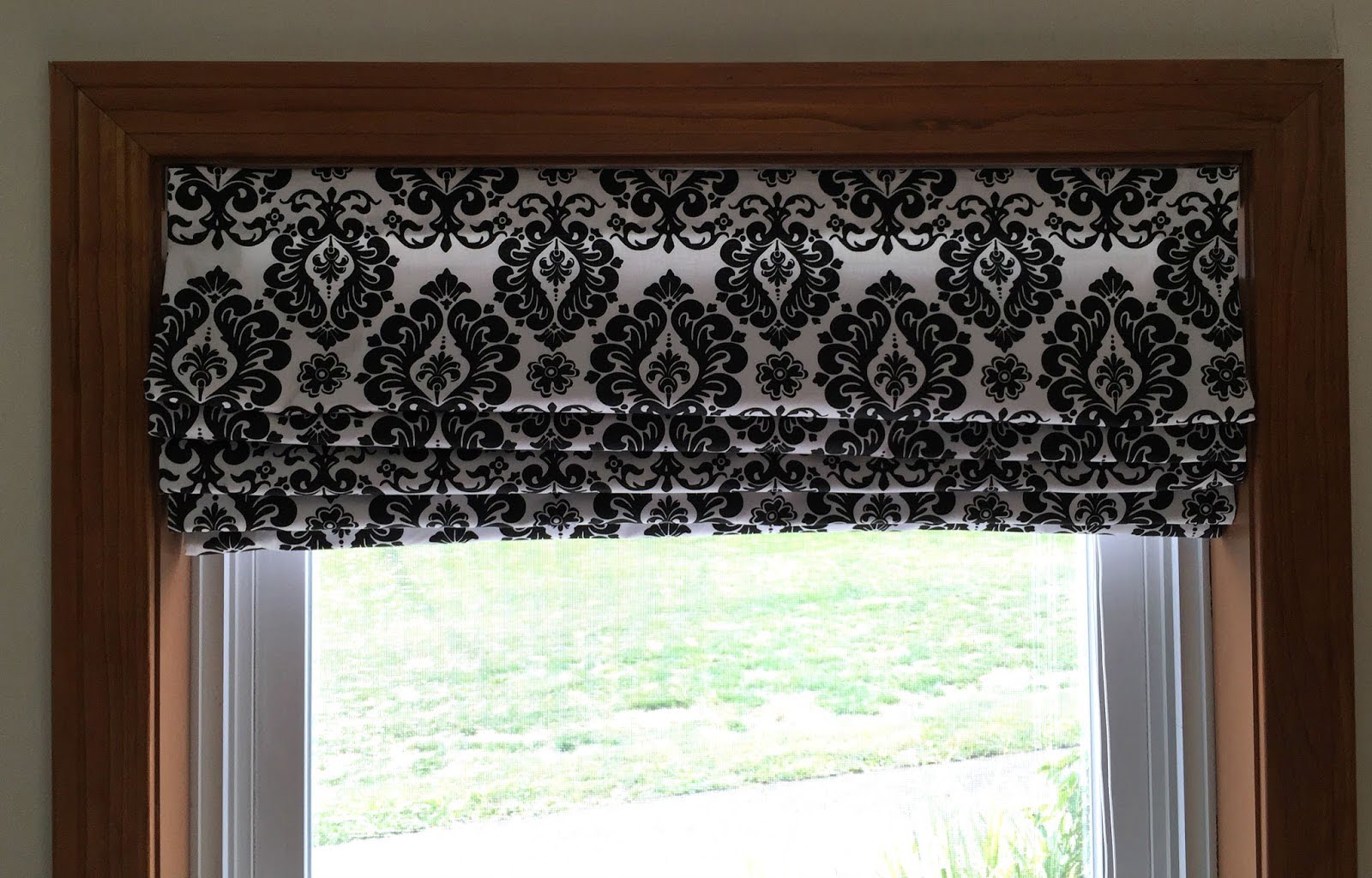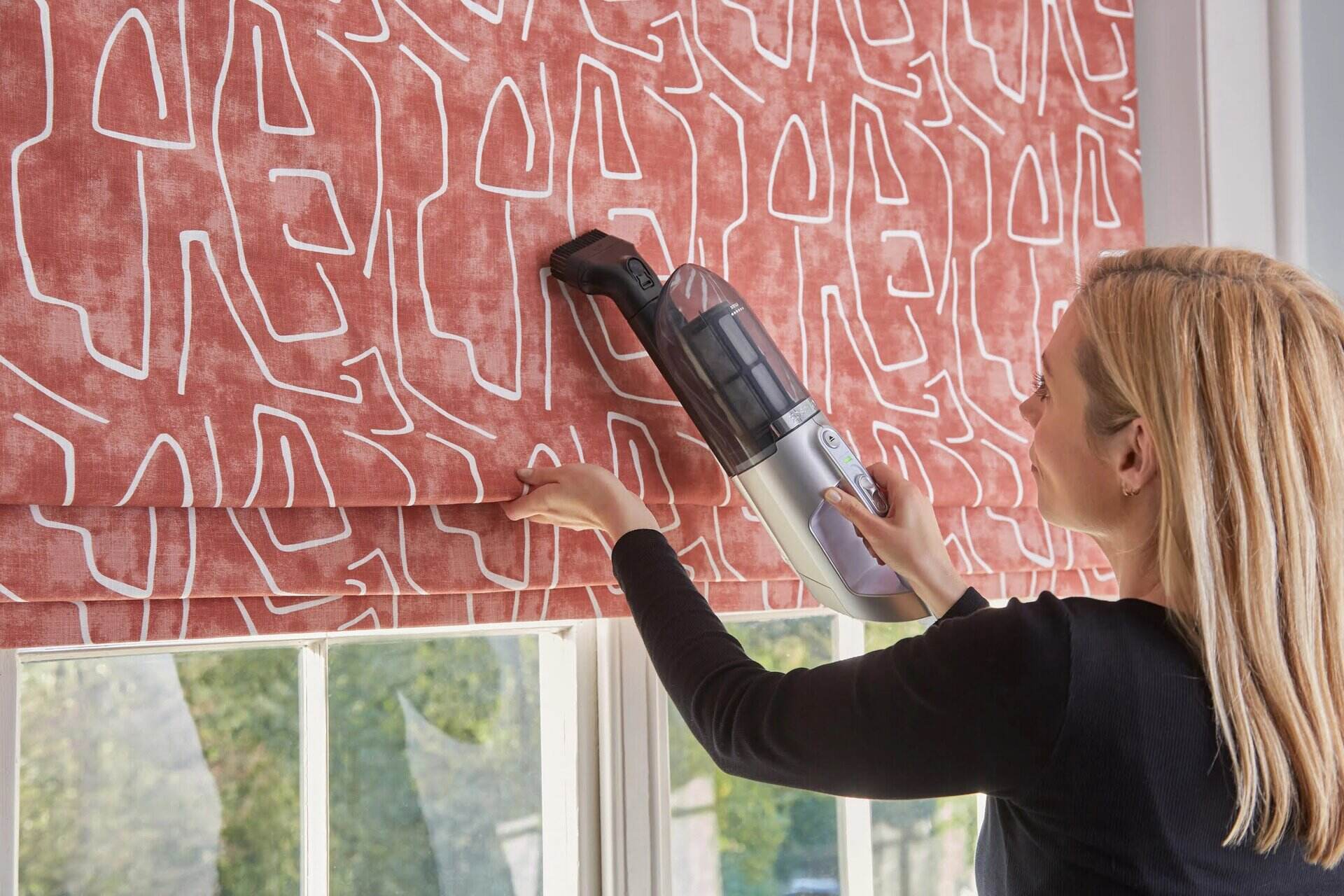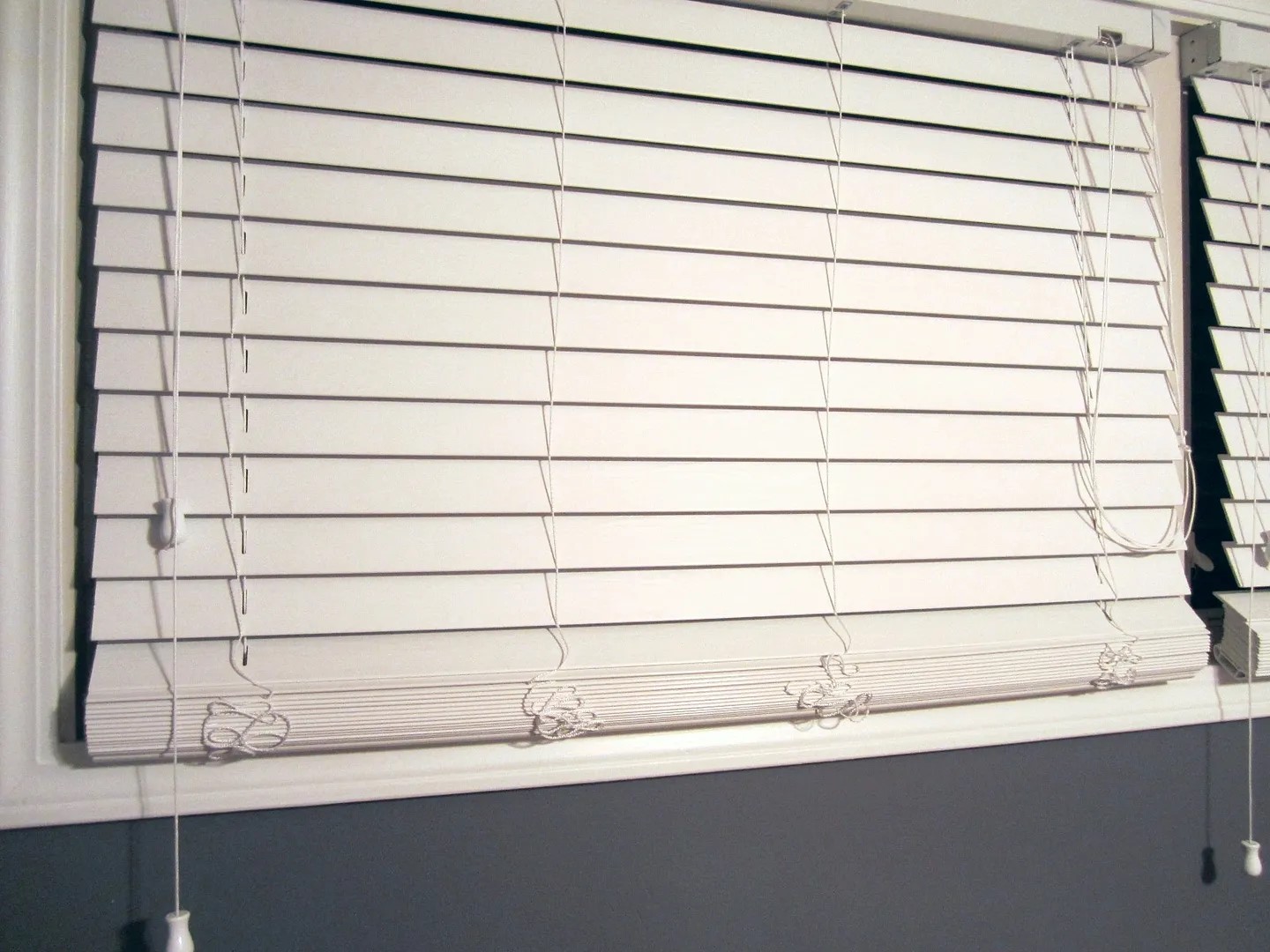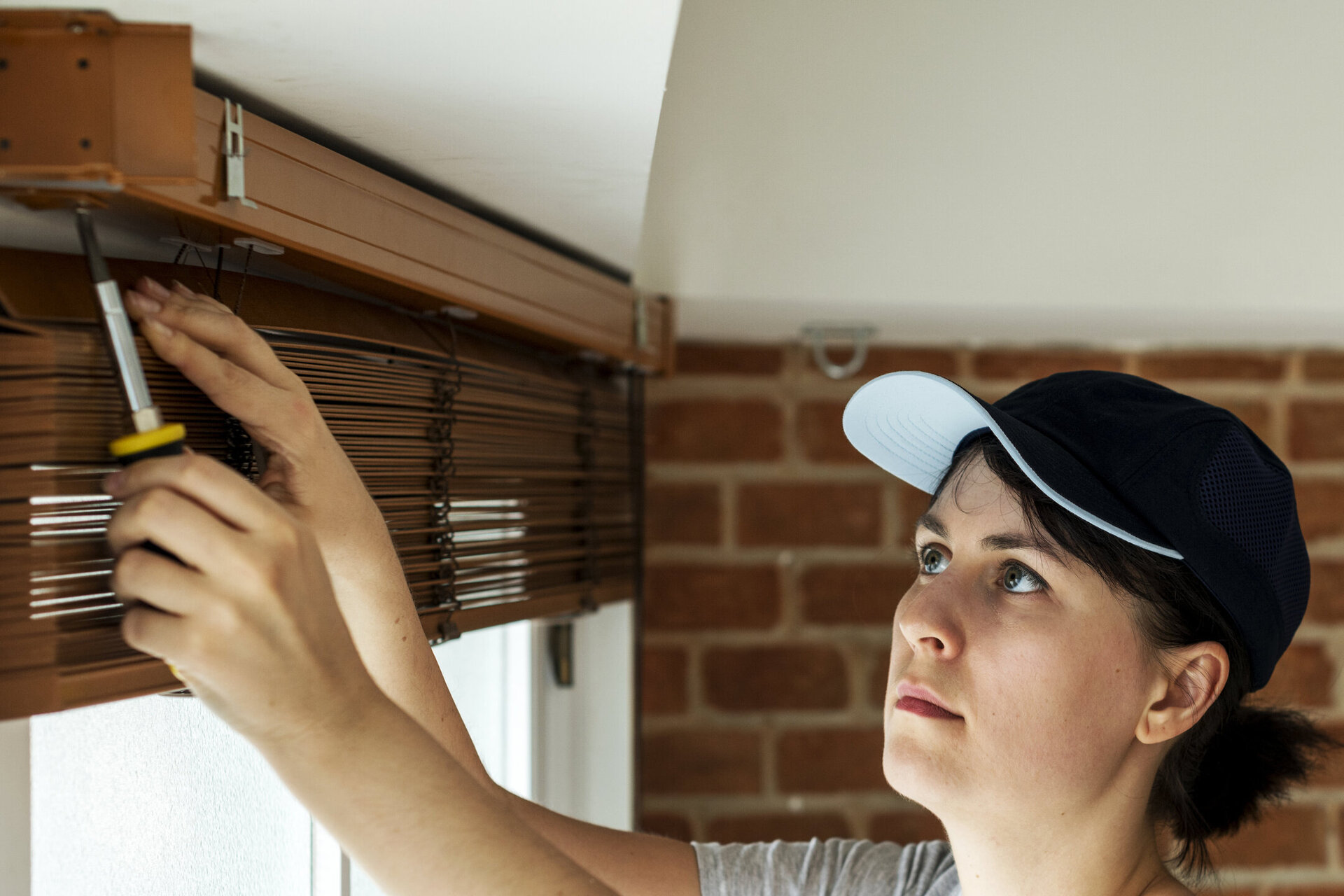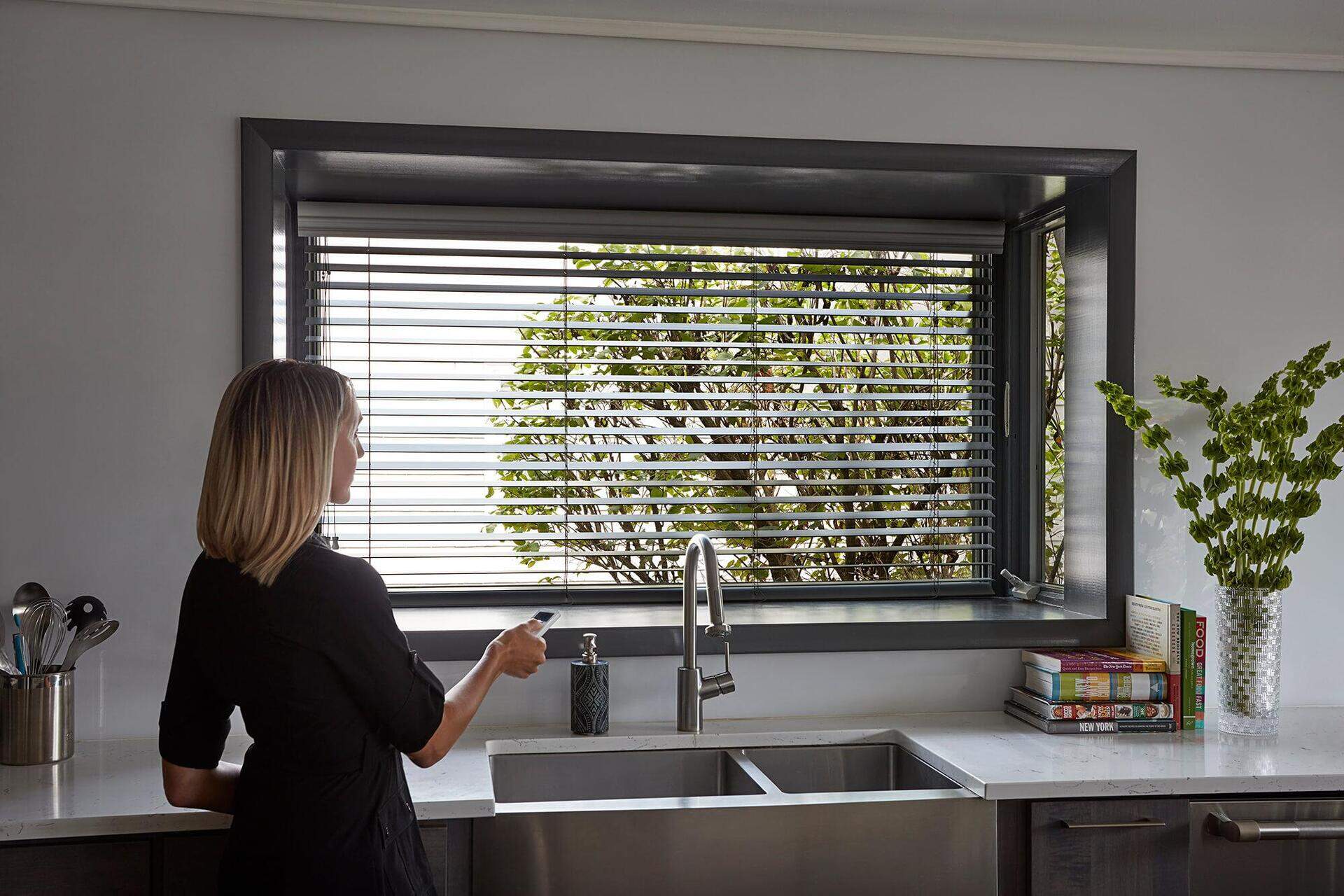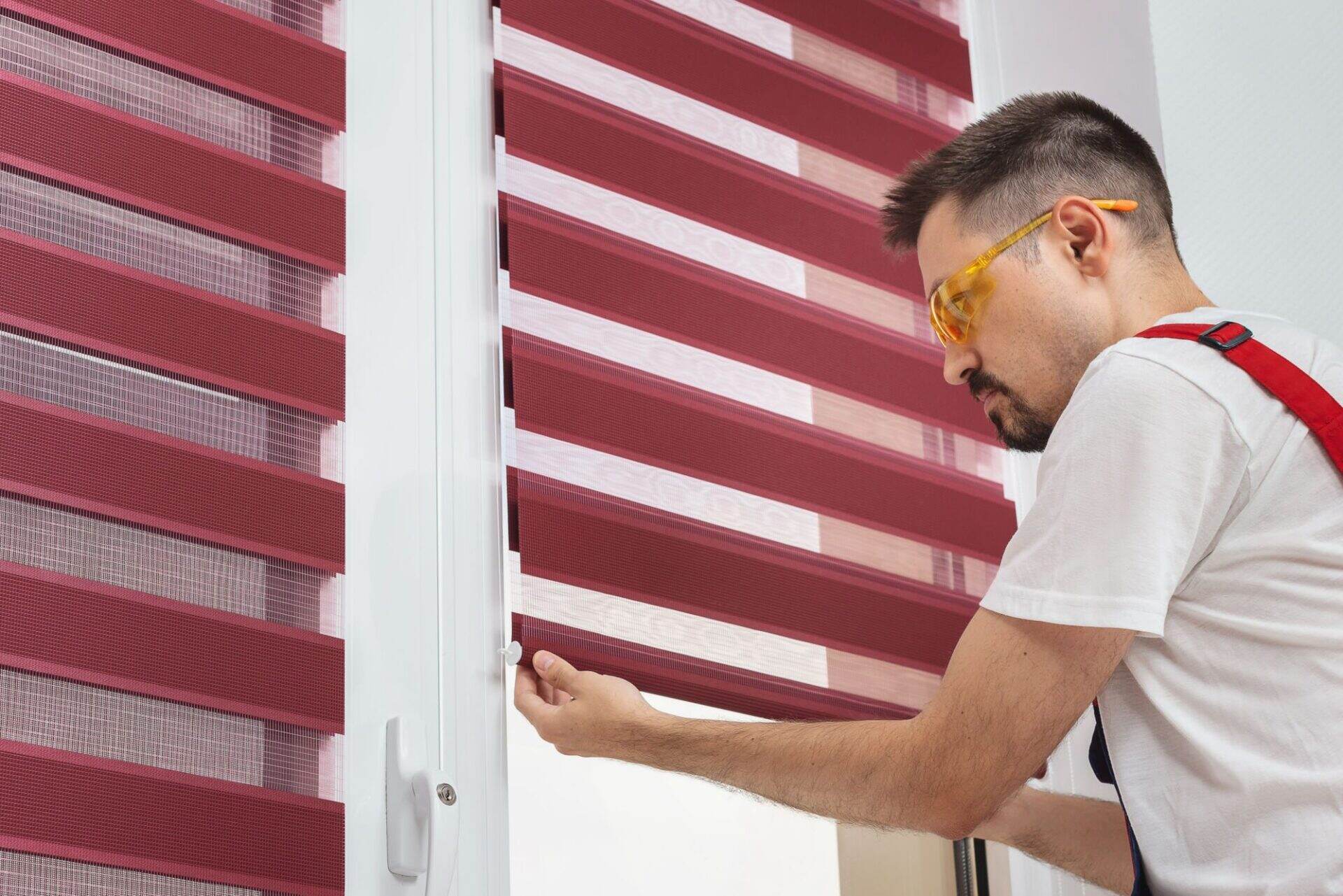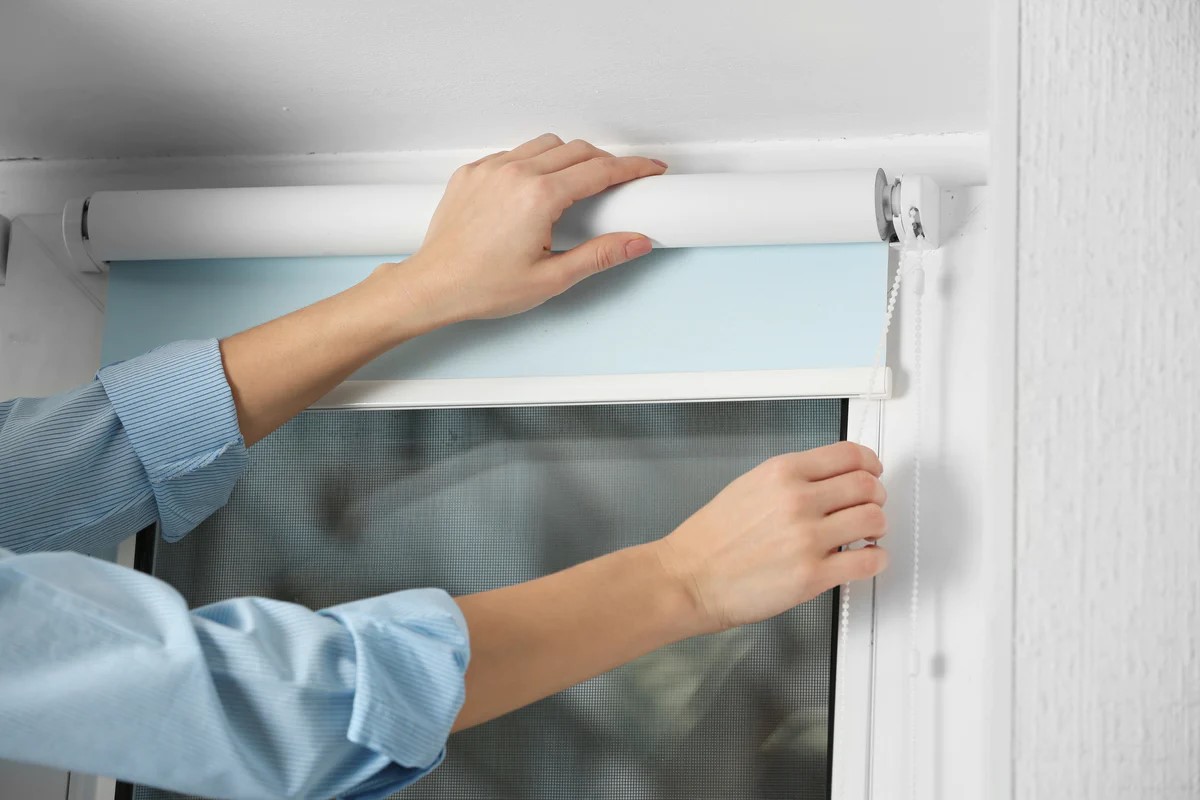

Articles
How To Measure For Roman Blinds
Modified: January 6, 2024
Learn how to measure for Roman blinds with our informative articles. Find step-by-step instructions and tips to ensure a perfect fit for your windows.
(Many of the links in this article redirect to a specific reviewed product. Your purchase of these products through affiliate links helps to generate commission for Storables.com, at no extra cost. Learn more)
Introduction
When it comes to home decor, window treatments play a vital role in transforming the look and feel of any room. Roman blinds, with their elegant and timeless design, have become a popular choice among homeowners. They not only provide privacy and light control but also add a touch of sophistication to any space.
However, to ensure a perfect fit and a flawless installation, accurate measurements are crucial. Measuring for Roman blinds may seem like a daunting task, but with the right tools and techniques, you can achieve professional results. In this article, we will guide you through the step-by-step process of measuring for Roman blinds, as well as provide helpful tips and insights to avoid common mistakes.
By following these guidelines, you can confidently measure your windows, whether you’re opting for ready-made Roman blinds or custom-made ones. So, let’s dive in and learn how to achieve the perfect fit for your Roman blinds!
Key Takeaways:
- Accurate measurements are crucial for perfectly fitted Roman blinds, ensuring optimal functionality, aesthetics, and cost savings. Use the right tools, measure twice, and consider inside versus outside mount options for a flawless installation.
- Avoid common mistakes when measuring for Roman blinds by double-checking measurements, accounting for obstructions, and seeking professional assistance if needed. Precision and attention to detail are key for a successful window treatment installation.
Read more: How To Make Roman Blinds
The Importance of Accurate Measurements
Accurate measurements are essential when it comes to installing Roman blinds. Properly measured blinds not only ensure a seamless and professional-looking installation but also provide optimal functionality and aesthetics. Here’s why accurate measurements are so important:
- Perfect Fit: When Roman blinds are measured correctly, they fit snugly within the window frame or on the outside mount, without any gaps or overlaps. This ensures maximum privacy, light control, and insulation. Ill-fitted blinds can detract from the overall look of the room and compromise their functionality.
- Avoidance of Damage: Incorrect measurements can lead to blinds that are too large or too small for the window. If the blinds are too large, they may rub against the frame, causing damage to both the blinds and the window. On the other hand, blinds that are too small may leave gaps, allowing unwanted light and privacy intrusion.
- Expense: Taking accurate measurements upfront can save you from the costly mistake of ordering blinds that are the wrong size. Ordering custom-made blinds based on incorrect measurements can result in a waste of time, money, and resources. By measuring accurately, you can ensure that you get the right-sized blinds the first time.
Therefore, it is crucial to take the time to measure your windows correctly before purchasing or installing Roman blinds. By doing so, you can achieve a flawless and functional window treatment that enhances the overall aesthetic of your space.
Tools Required for Measuring Roman Blinds
Before you start measuring for Roman blinds, make sure you have the following tools on hand:
- Tape Measure: A good quality tape measure is essential for accurate measurements. Choose one that is at least 1 inch wide and has both inches and centimeters marked.
- Pencil or Pen: Use a pencil or pen to mark your measurements on the window frame or any other designated area.
- Notepad: Keep a notepad handy to jot down your measurements and any relevant notes or considerations.
- Level: A level is helpful in ensuring that the blinds will hang straight and level. It ensures that the blinds won’t appear crooked or tilt to one side.
- Ladder or Step Stool: In case you need to measure windows that are out of reach, a ladder or step stool will be essential to safely access higher areas.
Having these tools readily available will make the measuring process much easier and efficient. It’s always a good idea to gather all the necessary tools before you begin measuring for your Roman blinds to avoid any unnecessary delays or interruptions. With the right tools and measurements, you are ready to proceed with the measuring process and ensure a perfect fit for your blinds.
Step-by-Step Guide to Measuring for Roman Blinds
Now that you have your tools ready, it’s time to dive into the step-by-step process of measuring for Roman blinds. Follow these instructions to ensure accurate measurements:
- Measuring the Width: Start by measuring the width of the window. Measure the inside width of the window frame from left to right. If you prefer an outside mount, measure the desired width covering the entire window frame. Take note of the measurement.
- Measuring the Length: Next, measure the length or height of the window. For inside mount, measure from the top inside edge of the window frame to the window sill. If you prefer an outside mount, measure from the top edge of the chosen installation point to where you want the bottom of the blinds to hang. Again, take note of the measurement.
- Considerations for Inside Mount vs Outside Mount: Decide whether you want to mount the blinds inside or outside the window frame. Inside mount is a more streamlined and sleek option, while outside mount offers better light control and privacy. The choice depends on your preference and the style of your windows and room.
- Additional Measurements to Note: Along with the width and length measurements, take note of any other important dimensions. For example, if there are any obstructions like handles or cranks that might interfere with the installation or operation of the blinds, measure the distance between them and the window frame.
By following these steps, you can ensure accurate measurements for your Roman blinds. Remember to measure twice to double-check your measurements before making any purchases or installations. It’s better to be safe than sorry!
Measuring the Width
The first step in measuring for Roman blinds is determining the width of the window. The width measurement will depend on whether you prefer an inside mount or an outside mount for your blinds.
If you opt for an inside mount, follow these steps:
- Using your tape measure, measure the width of the window frame from the inside edge on the left to the inside edge on the right. Take note of the measurement in inches or centimeters.
- Repeat the measurement at the top, middle, and bottom of the window frame. Note down the smallest measurement. This ensures that your blinds will fit perfectly even if there are slight variations in the window frame dimensions.
If you prefer an outside mount, follow these steps:
- Measure the width of the area where you want to install the blinds. This can be wider than the actual window frame to give a more dramatic effect or to block out light effectively.
- Decide how much overlap you want on each side. The general recommendation is to add 2-3 inches (5-7.5 cm) to the width of the window frame on each side for proper coverage and light blockage.
- Take note of the final width measurement, including the additional overlap, to ensure the blinds fit correctly outside the window frame.
By accurately measuring the width of your window, you can ensure that your Roman blinds fit seamlessly and provide the desired aesthetic and functionality. Take your measurements carefully and double-check them before proceeding to the next step.
Read more: What Are Roman Blinds
Measuring the Length
After measuring the width, the next step is to determine the length or height of the window for your Roman blinds. Again, whether you choose an inside mount or an outside mount will affect the measurement process.
If you opt for an inside mount, follow these steps:
- Using your tape measure, measure the height from the top inside edge of the window frame to the window sill. Make sure to measure at the left, middle, and right sides of the window frame.
- Take note of the smallest measurement, as this will be the length measurement for your Roman blinds. It ensures a proper fit within the window frame.
If you prefer an outside mount, follow these steps:
- Decide how far above the window you want the blinds to extend. This will depend on factors such as your personal preference and the overall aesthetic you wish to achieve.
- Measure from the chosen installation point (usually the top edge of the window frame) to where you want the bottom of the blinds to hang. This measurement should include the desired overlap.
- Note down the final length measurement, including the additional height for the desired appearance and coverage of the blinds.
By measuring the length accurately, you can ensure that your Roman blinds fit perfectly and provide the desired level of privacy and light control. Double-check your measurements to avoid any potential errors and ensure a flawless installation.
When measuring for Roman blinds, always use a metal tape measure for accuracy. Measure the width at the top, middle, and bottom of the window, and the length from top to bottom. Always double-check your measurements before ordering.
Considerations for Inside Mount vs Outside Mount
When measuring for Roman blinds, it’s crucial to decide whether you prefer an inside mount or an outside mount. Both options have their advantages and considerations, and your choice will depend on various factors, including your personal preference and the style of your windows and room.
Inside Mount:
An inside mount refers to installing the blinds within the window frame. Here are some things to consider when opting for an inside mount:
- Sleek and Streamlined Look: Inside mount blinds appear more integrated with the window, giving a clean and streamlined aesthetic.
- Depth and Clearance: Measure the depth of your window frame to ensure it can accommodate the blinds. Consider any obstructions, such as window handles or cranks, that may affect the functionality and operation of the blinds.
- Light Gaps: Inside mount blinds may have slight light gaps on the sides due to the natural depth of the window frame. Keep this in mind if you prefer maximum light blockage.
Outside Mount:
An outside mount involves installing the blinds on the wall or above the window frame, covering the entire window area. Consider the following when choosing an outside mount:
- Enhanced Light Control and Privacy: Outside mount blinds provide better light blockage and privacy since they cover the entire window area.
- Design Statement: Outside mount blinds can create a dramatic and impactful effect, especially if extended to cover more wall space on either side of the window.
- Measurement Considerations: When measuring for outside mount blinds, consider the desired coverage and add extra inches to the width and length measurements to ensure full coverage and desired overlap.
By considering the pros and cons of each mount option, you can make an informed decision and choose the one that aligns with your style preferences and functional needs.
Additional Measurements to Note
In addition to the width and length measurements for your Roman blinds, there are some additional measurements to consider and note down. These measurements will help ensure a smooth and successful installation:
- Obstructions: Take note of any obstructions on or near the window frame, such as handles, cranks, or window locks. Measure the distance between these obstructions and the window frame to ensure that the blinds can be installed without interference.
- Window Depth: Measure the depth of your window frame, especially if you are considering an inside mount. This measurement is important to ensure that there is enough space to accommodate the blinds without any obstruction or overlapping issues.
- Windowsill: If you have a windowsill, measure its depth and width. This measurement will determine how far the blinds can hang down without touching the windowsill.
- Overlap: Determine the desired amount of overlap for your Roman blinds. The overlap refers to the extent to which the blinds cover the window frame or wall area surrounding the window. This overlap can vary depending on personal preference, but a general recommendation is to allow for at least 2-3 inches (5-7.5 cm) on each side for sufficient coverage and light blockage.
By taking these additional measurements into account, you can ensure that your Roman blinds fit perfectly and function smoothly without any obstructions or issues. These measurements provide valuable information that will help guide the installation process and ensure a flawless end result.
Tips for Ensuring Accuracy
When measuring for Roman blinds, it’s important to strive for accuracy to ensure a perfect fit. Here are some tips to help you achieve precise measurements:
- Measure Twice: Double-check your measurements to eliminate any errors or inconsistencies. It’s always better to measure twice and be sure than to rush through the process and end up with incorrect measurements.
- Use a Sturdy Tape Measure: Invest in a good quality tape measure that is accurate and durable. A sturdy tape measure will provide more reliable measurements, leading to a better outcome.
- Take Precise Measurements: Ensure that you measure from the correct points (e.g., inside edges or specified installation points) and use a firm and steady hand to avoid any unintentional deviations or errors.
- Considerations for Inside Mount: When measuring for inside mount blinds, take the smallest measurement at multiple points to account for any slight variations in window frame dimensions.
- Allow for Flexibility: If you have uneven windowsills or walls, make sure to accommodate for these irregularities by adjusting the measurements accordingly. This will help achieve a balanced and symmetrical appearance.
- Communicate with Manufacturers/Suppliers: If you are ordering custom-made Roman blinds, make sure to communicate your measurements accurately to the manufacturers or suppliers. Provide them with the correct measurements, specifying whether they are for an inside or outside mount.
- Seek Professional Assistance: If you are unsure or uncomfortable with measuring yourself, consider consulting a professional. They can provide guidance and ensure precise measurements for your Roman blinds.
By following these tips, you can enhance the accuracy of your measurements and increase the chances of obtaining perfectly fitting Roman blinds. Remember, precision is key when it comes to achieving the desired aesthetic and functionality for your window treatments.
Read more: How To Attach Roman Blinds To Window
Common Mistakes to Avoid
Measuring for Roman blinds can be a straightforward process as long as you avoid these common mistakes:
- Guessing Measurements: Never guess or estimate the measurements of your windows. This can lead to ill-fitting blinds that don’t provide the desired coverage or functionality.
- Mixing Up Measurement Units: Ensure consistency in your measurement units, whether it’s inches or centimeters. Mixing up units can cause confusion and result in inaccurate measurements.
- Forgetting to Account for Obstructions: Neglecting to measure and consider any obstructions, such as handles or cranks, can lead to blinds that don’t fit properly or operate smoothly. Take note of these obstructions and measure the distance between them and the window frame.
- Not Double-Checking Measurements: Always double-check your measurements before making any purchases or installations. Mistakes can happen, and it’s better to catch them early on to avoid costly errors.
- Overlooking Depth and Clearance: If opting for an inside mount, ensure that your window frame has enough depth to accommodate the blinds. Failing to consider this may result in blinds that rub against the glass or hinder the window’s functionality.
- Disregarding Overlap: For outside mount blinds, forgetting to account for the desired overlap can leave gaps and reduce the effectiveness of light control and privacy. Make sure to include the appropriate overlap in your measurements.
- Ignoring Window Shape or Frame Variations: Some windows may not have perfectly square or rectangular shapes, and their frames might have variations. Take the time to measure at multiple points and consider any irregularities to ensure a proper fit.
- Failing to Consult Professionals: If you are unsure about measuring or installing Roman blinds, seek professional assistance. They have the expertise to guide you through the process and help you avoid costly mistakes.
By being mindful of these common mistakes and taking the necessary precautions, you can ensure more accurate measurements and a successful Roman blinds installation.
Conclusion
Properly measuring for Roman blinds is a crucial step in achieving a flawless and functional window treatment. Accurate measurements ensure a perfect fit, optimal privacy, and light control. By following the step-by-step guide and considering important factors like inside mount versus outside mount, you can successfully measure for your Roman blinds.
Remember to use the right tools, take precise measurements, and double-check your work to avoid common mistakes. Taking note of additional measurements and seeking professional assistance if needed are also key considerations.
Accurate measurements lay the foundation for a well-designed space with Roman blinds that not only enhance the aesthetics but also provide the desired level of privacy and light control. Whether you choose an inside mount or outside mount, measuring correctly will save you time, money, and the frustration of having ill-fitting blinds.
So grab your tape measure, gather the necessary tools, and begin the measuring process with confidence. By following the guidelines and tips provided in this article, you’ll be well on your way to enjoying the elegance and functionality of perfectly fitted Roman blinds.
Frequently Asked Questions about How To Measure For Roman Blinds
Was this page helpful?
At Storables.com, we guarantee accurate and reliable information. Our content, validated by Expert Board Contributors, is crafted following stringent Editorial Policies. We're committed to providing you with well-researched, expert-backed insights for all your informational needs.
